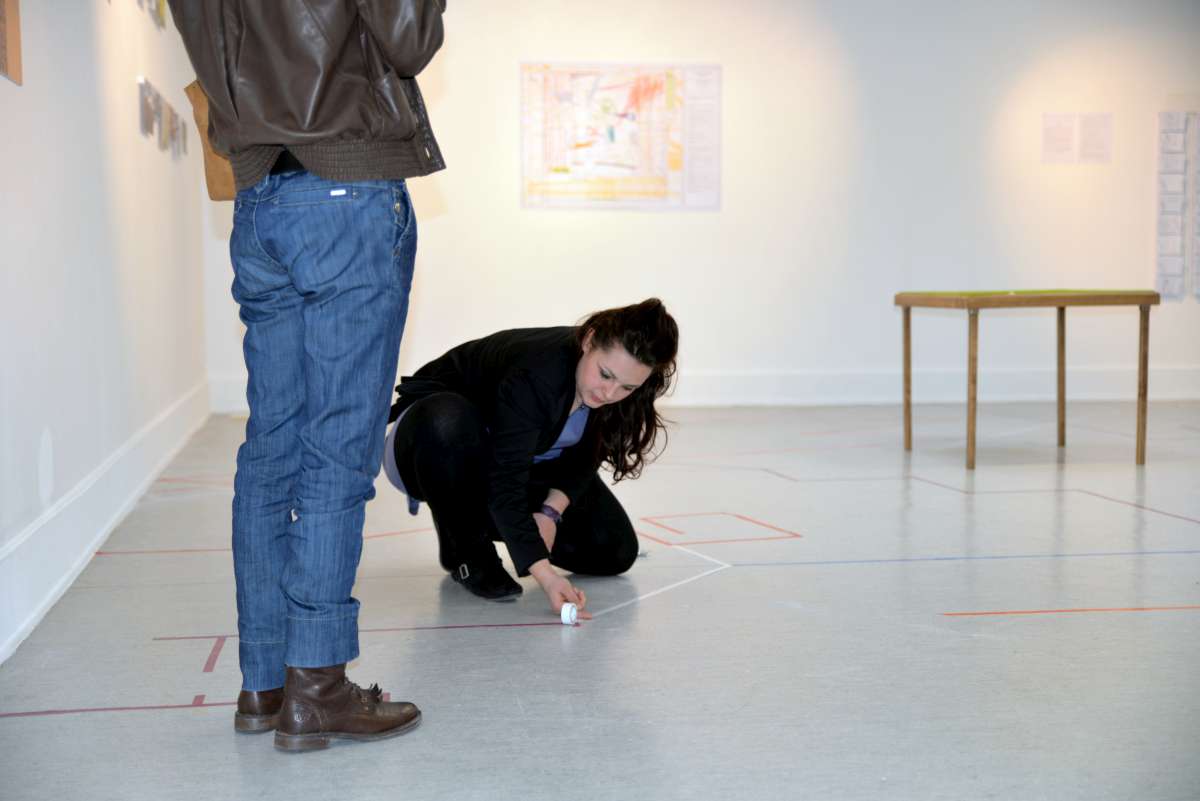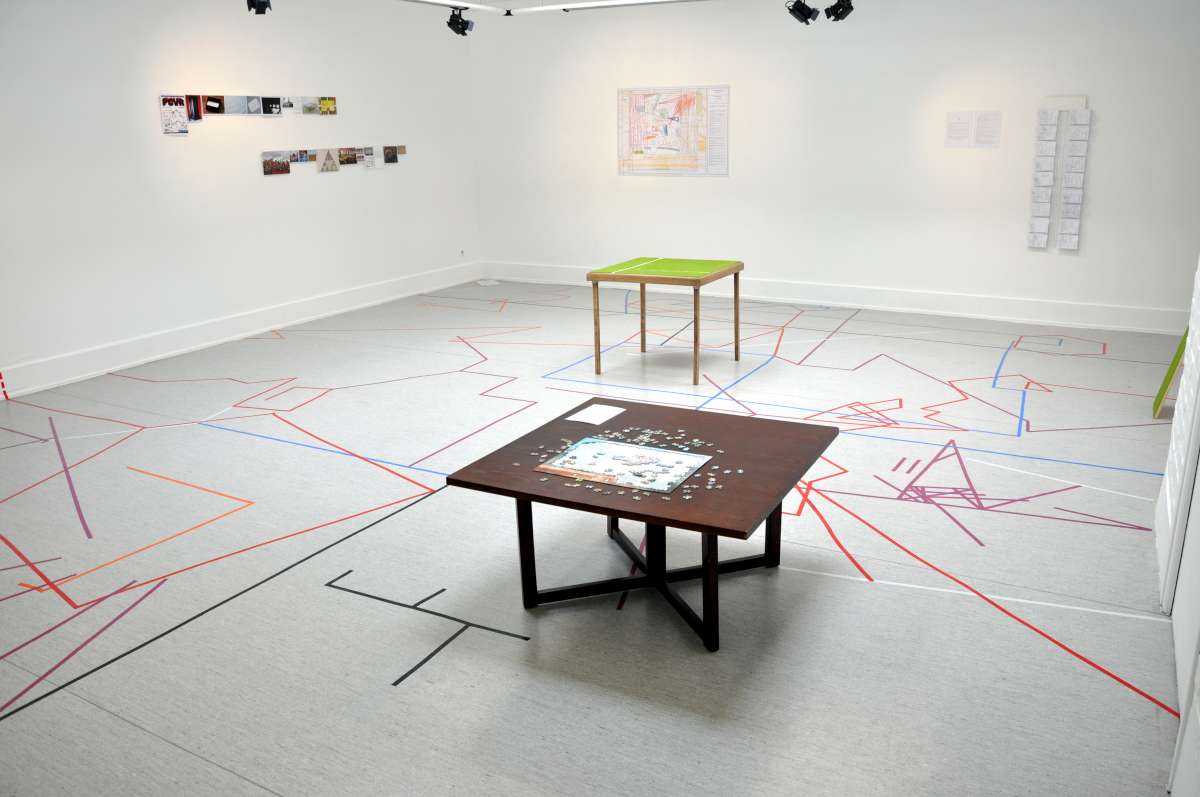ESPACE-JEU
Colored adhesive tape, scissors, cutters, variable size and duration
Digital simulation, print on architectural paper with grid pattern, 84.1 cm x 118 cm
Espace-Jeu est un objet hybride composé d’une performance qui interroge l’autonomie de ses participants et d’une simulation qui tente d’en anticiper les comportements. Conçue autour de la maxime suivante : « Vous êtes dans cet espace. Vous matérialiserez/tracerez l’espace qui vous relie à votre environnement. À partir de cet instant, vous êtes autonomes. », elle laisse carte blanche à quiconque veut s’en emparer, fournissant de surcroit les outils pour se libérer de toute contrainte créative et pour s’exprimer pleinement, dans un renversement assumé des pouvoirs.
Sans surprise, et presque conformément à la simulation, l’œuvre a, à la fin du vernissage, proliféré sans fin, outrepassant in fine les limites tacites imposées par la galerie. Contre toute attente, et comme pour en contrôler l’expansion, le commissaire d’exposition s’est alors lui aussi prêté au jeu en supprimant arbitrairement certains tracés, replaçant de facto la performance dans un carcan plus réglementaire, fixant par là-même le seuil de l’œuvre. Paradoxalement, et même après le moment du jeu, l’œuvre continue de déborder au-delà de sa propre limite.
Espace-Jeu is a hybrid object composed of a performance that questions the autonomy of its participants and a simulation that tries to anticipate their behaviour. Conceived around the following maxim: «You are in this space. You will materialize/trace the space that connects you to your environment. From that moment on, you are in full autonomy.», it gives carte blanche to anyone who wants to participate in the simulation, providing the tools to free themselves from any creative restrictions fully allowing to express themselves, in an assumed power reversal.
Unsurprisingly, and almost in accordance with the simulation, the work proliferated endlessly at the end of the vernissage, ultimately overstepping the tacit limits imposed by the gallery. Against all expectations, and in order to control its expansion, the curator also played the game by arbitrarily removing some of the lines, de facto replacing the performance in a more regulatory straightjacket, setting on his own the threshold of the work. Paradoxically, and even after the end, the work continues to overflow beyond its own limit.


